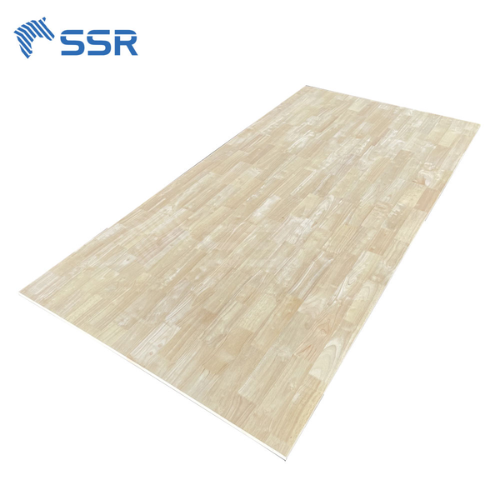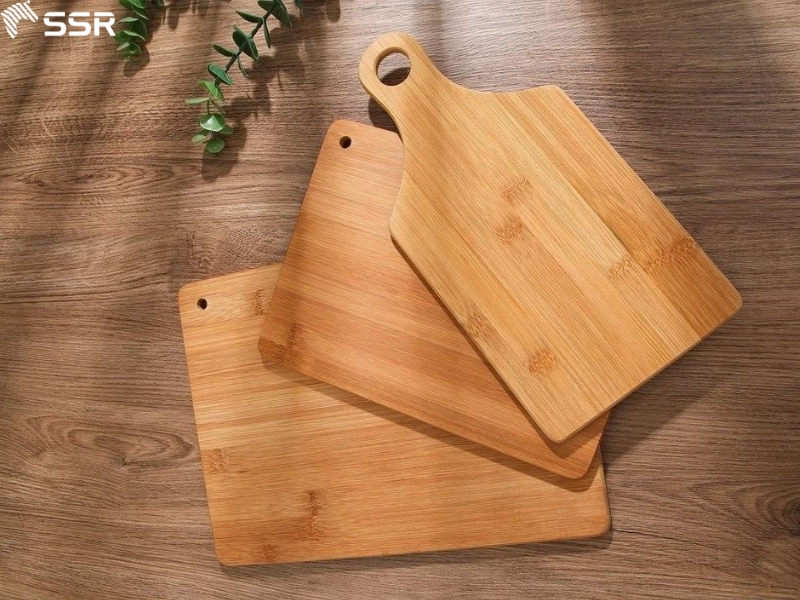NEWS
Hevea butcher block countertops, made from the wood of the hevea tree (Hevea brasiliensis), are becoming a popular choice in modern kitchens thanks to their combination of aesthetics and high durability. This type of wood is not only environmentally friendly but also has good bearing properties, suitable for food preparation and processing work.
Dimensions and sizes
Hevea butcher block countertops are versatile in size, catering to different kitchen layouts and designs. The product’s typical thickness is 1.5 to 2 inches, standard lengths are 4, 6, 8, and 10 feet, and customer requirements. These countertops are offered in both unfinished and pre-finished versions. Unfinished blocks allow for customization in terms of edging and finishing, while pre-finished options come with a protective UV finish and ease edges, making them ready for immediate installation.
Color and grain characteristics
Light tones with slight variations bring out the natural beauty of wood grain. From light yellow to warm brown, creating a cozy beauty for the kitchen space, making it easy to combine with other types of furniture and designs. The wood’s straight grain and fine texture create a smooth, clean appearance. Although hevea wood can be left in its natural state, it is also highly adaptable to various stains, allowing homeowners to match their countertops to their specific kitchen design.
Joining and installation techniques

Hevea butcher block countertops
When joining hevea butcher block pieces, a combination of tools and methods ensures a seamless and durable connection:
- Pocket hole joinery
Involves drilling angled holes into the wood, allowing screws to be inserted and securely join the blocks together. The advantage of pocket holes is that they are typically hidden beneath the countertop, maintaining the visual integrity of the surface.
- Biscuit joiner
Uses a biscuit joiner tool to create precise slots on the edges of the wooden blocks. Then, a small, oval-shaped “biscuit” is inserted into these slots, and the wooden pieces are glued together, ensuring that when they are brought together, the alignment is accurate.
- Mortise and tenon joint
One of the oldest and most widely used joinery techniques. It involves cutting a tenon (a protruding piece of wood) that fits snugly into a mortise (a cavity) in another piece of wood, creating an extremely strong and durable joint.
- Finger joint board
Commonly used to join two pieces of wood, especially when increasing the length of a board is needed. This method creates “fingers,” or interlocking ridges, on the ends of two pieces of wood. These fingers are then joined together and glued, forming a very strong and stable joint due to the increased contact area between the pieces. The finger joint board is often used in products such as doors, frames, and other furniture items, maximizing the use of shorter wood pieces and minimizing material waste
- Finishing
After joining, it is advisable to apply wood glue to reinforce the seams. Once the glue has dried (typically after 24 hours), the edges can be sanded down to achieve a smooth, cohesive finish.
Advantages of hevea butcher block
- Sustainability
The use of hevea wood, a byproduct of the hevea industry, makes hevea butcher block countertops an eco-friendly option. The wood is harvested from trees that have ceased latex production, giving the material a second life as a durable countertop.
- Durability
Hevea wood is known for its density and strength, making it highly resistant to scratches and everyday wear. This durability is one of the key reasons hevea is favored for high-traffic kitchen areas.
- Affordability
Compared to other countertop materials like granite or quartz, hevea butcher block countertops are more budget-friendly, particularly for those interested in DIY installation. The lower cost does not come at the expense of quality, making it an attractive option for budget-conscious homeowners.
Whether you prefer a natural, rustic look or a more sleek, modern surface, hevea wood is the optimal and friendly solution for your living space.
Featured Products
Acacia Wood Butcher Block Countertops Supplier
Specifications:
- Species: Acacia
- Moisture: < 12%
- Wood Stave (Length): 150-400 mm
- Wood Stave (Width): 30-80 mm
- Length & Width tolerance: 0/+3 mm
- Thickness tolerance: +/- 0.2 mm
- Glue: D4
- Quality: AB, BC or customized
- Surface finish: Sanding 180-240 grit, 2 faces
Rubberwood Finger Joint Board Supplier
- Species: Rubberwood
- Moisture: <12 %
- Wood Stave (Length): 150-600 mm
- Wood Stave (Width): 35-80 mm
- Length & Width tolerance: 0/+3 mm
- Thickness tolerance: +/- 0.2 mm
- Glue: D4
- Quality: AA, AC or customized
- Surface Finish: sanding 240-320 grit, 2 faces
Birch Butcher Block Countertop Supplier
Specifications:
- Species: Birch
- Moisture: < 12%
- Wood Stave (Length): 150-400 mm
- Wood Stave (Width): 20-80 mm
- Length & Width tolerance: 0/+3 mm
- Thickness tolerance: +/- 0.2 mm
- Glue: D4
- Quality: AB, AC or customized
- Surface finish: Sanding 180-240 grit, 2 faces.
Featured News
Related News
Bamboo Cutting Board Tips for Distributors – SSR VINA
Bamboo has become a popular alternative to traditional hardwoods when it comes to kitchen cutting boards. But is it really a good choice for your kitchen? In this guide, we’ll cover everything from the benefits and downsides to care instructions, environmental impact, and FAQs. What is a Bamboo Cutting Board? A bamboo cutting board is […]

Biomass Energy: The Natural Powerhouse of Renewable Energy
In the search for sustainable energy solutions, biomass stands out as one of the most promising alternatives to fossil fuels. But what exactly is biomass, and why is it gaining attention around the world? Let’s explore how this natural energy source works, where it’s used, and what the future holds. What Is Biomass? Biomass refers […]








 Tháng 8 16, 2024
Tháng 8 16, 2024 | SSR
| SSR




